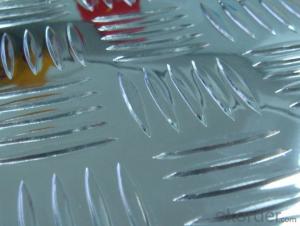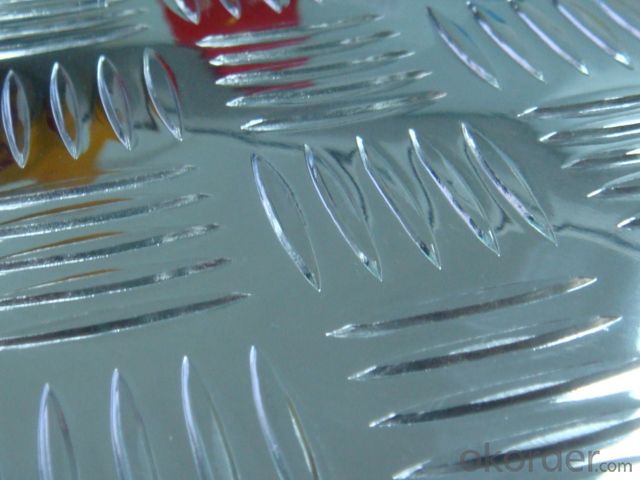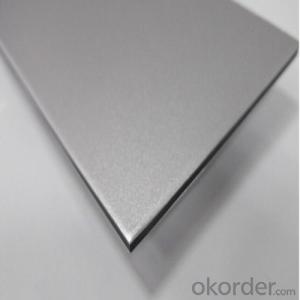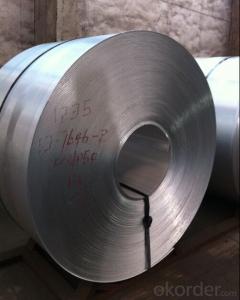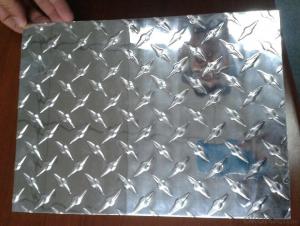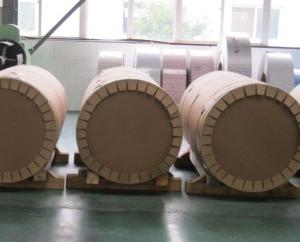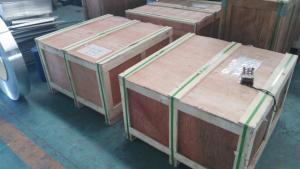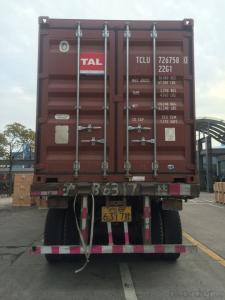Rolled Aluminum Sheets Price Per Pound - Best Price Aluminium Slab Stocks in Our Warehouse
- Loading Port:
- Shanghai
- Payment Terms:
- TT OR LC
- Min Order Qty:
- 4 m.t
- Supply Capability:
- 6000 m.t/month
OKorder Service Pledge
OKorder Financial Service
You Might Also Like
Specification
1.Structure of Product Description
Cold rolled ad hot rolled and cold drawn aluminum sheet are all widely used in the field of construction field and decoration field, etc.
There are many different grades, such as: 1000 series, 2000 series,
8000 series5000 series, 7000series,etc. The detailed grade are as follows: 1010, 1050,1060,1100, 2024, 3003, 5754,5083,6061,6063,8011, etc.
The temper is include H14, H22, H24, O,H114, etc.
2. Main features of the product
a.Competitive price
b.Frist-Class Service.
3. Image.

4. Product detailed sizes:
1000mm*2000mm, 1219mm*2438mm,1500mm*3000mm, etc.
5. FAQ:
What is the quality standard?
---Usually our standard is GB3880-2006 or others.
What is the width range?
---It is from 300mmto 2000mm, etc.
What is the length range:
---It is from 1000mm to 6000mm, etc.
What is the MOQ for your products yet?
---Normally it is around 9tons/each size.
How many tons did you export in one year?
---Normally it is around 800 tons totally.
Where is your client from?
---Normally it is from Fiji, Canada, UAE, Turkey, ETC.
What is your mainly products?
---Normally they are aluminum sheet,small-5-bar checkered sheet,big-5-bar checkered cold rolled aluminum sheet, mirror finish aluminium sheet,aluminum sandwich panel, aluminum composite panel,etc.
- Q: What is the difference between aluminium plate 5A05 and 5A06?
- The aluminum plate doesn't have this material. Have you made a mistake?Give you a full one,1, pure aluminum: Material: 1050/1060/1070/1100/ 1200/ thickness: 0.1---20mm width: 800---2200mm2, alloy aluminum: Material: 2A21/3003/5052/5083/6061/6082 /8011 thickness: 0.5---260mm width: 800---2800mm3 curtain wall Kaiping aluminum plate: Material: 1060/1100 thickness 0.95, 1.35, 1.85, 2.35, 2.7, 2.85mm, width 0.8---1.5m
- Q: Can the aluminum sheets be used for solar panel frames?
- Indeed, solar panel frames can indeed be constructed using aluminum sheets. The lightweight and robust characteristics of aluminum render it a favored material for solar panel frames. Its resistance to corrosion acts as a safeguard against rain, humidity, and UV rays, thereby shielding the frames from environmental elements. Furthermore, the recyclability of aluminum makes it an eco-friendly alternative for solar panel frames. Thanks to the adaptability and resilience of aluminum sheets, they are a fitting selection for supporting and safeguarding solar panels, guaranteeing their enduring functionality and efficiency.
- Q: What is the coefficient of friction for aluminum sheets?
- The coefficient of friction for aluminum sheets can vary depending on the specific conditions, such as the surface it is in contact with and the presence of lubricants or contaminants. In general, the coefficient of friction for aluminum sheets is relatively low, ranging from 0.2 to 0.6. However, it is important to note that these values are approximate and can be influenced by various factors.
- Q: Is it possible to use aluminum sheets in environments with high temperatures?
- <p>Yes, aluminum sheets can be used in high-temperature environments, but with certain considerations. Aluminum has a high melting point of around 660掳C (1220掳F), which allows it to withstand high temperatures. However, its mechanical properties can degrade over time when exposed to sustained high temperatures, especially above 200掳C (392掳F). For applications requiring long-term exposure to high temperatures, special heat-resistant aluminum alloys or coatings may be necessary to maintain structural integrity and performance. It's also important to consider the specific conditions and the maximum temperature the aluminum will be exposed to when determining its suitability for a high-temperature application.</p>
- Q: Can aluminum sheets be used in the aerospace industry?
- Yes, aluminum sheets are commonly used in the aerospace industry due to their lightweight, high strength, and corrosion resistance properties. They are used in the construction of aircraft structures, such as fuselages, wings, and interior components, to ensure optimal performance and fuel efficiency.
- Q: Is it possible to use aluminum sheets as a material for exterior siding or cladding on buildings?
- <p>Yes, aluminum sheets are commonly used for siding or cladding due to their durability, lightweight, and resistance to corrosion. They are low maintenance, can be easily shaped, and come in various colors and finishes. Aluminum's resistance to weathering and its ability to withstand temperature extremes make it a popular choice for both residential and commercial buildings.</p>
- Q: How do you calculate the weight of an aluminum sheet?
- To calculate the weight of an aluminum sheet, you need to consider its dimensions (length, width, and thickness) and the density of aluminum. First, measure the length, width, and thickness of the aluminum sheet in inches or millimeters. Make sure to use the same unit of measurement throughout the calculation. Next, convert the dimensions to feet or meters if necessary. For example, if the dimensions are in inches, divide each value by 12 to convert it to feet. Multiply the length, width, and thickness together to find the volume of the aluminum sheet. If the dimensions are in different units, convert them to the same unit before multiplying. Then, look up the density of aluminum. The density of aluminum is approximately 2.7 grams per cubic centimeter or 2700 kilograms per cubic meter. Convert the volume of the aluminum sheet to the same unit as the density. For example, if the density is in kilograms per cubic meter and the volume is in cubic feet, convert the volume to cubic meters by multiplying it by 0.0283. Finally, multiply the volume of the aluminum sheet by the density of aluminum to get the weight of the sheet. The result will be in grams or kilograms if the density was in grams per cubic centimeter, or in kilograms or metric tons if the density was in kilograms per cubic meter. It's important to note that this calculation assumes a uniform thickness throughout the aluminum sheet. If the sheet has varying thicknesses, you would need to calculate the weight of each section separately and then sum them up to find the total weight.
- Q: How do aluminum sheets perform in terms of chemical resistance?
- Aluminum sheets generally have good chemical resistance properties. However, their performance can vary depending on the specific chemical environment and conditions. Aluminum is known to have excellent resistance to corrosion from most acids, alkalis, and organic solvents. It forms a protective oxide layer on its surface, which prevents further reaction with many chemicals. However, aluminum can be susceptible to corrosion in certain aggressive environments, such as strong acids like hydrochloric acid or sulfuric acid, and alkaline solutions with high pH levels. In these cases, the protective oxide layer may break down, leading to the degradation of the aluminum surface. Additionally, some chemicals, like mercury and certain salts, can also cause localized corrosion or pitting on aluminum surfaces. Therefore, it is important to consider the specific chemicals and concentrations that the aluminum sheets will be exposed to when assessing their chemical resistance performance. To enhance the chemical resistance of aluminum sheets, various surface treatments, coatings, or alloys can be applied. These modifications can provide additional protection against specific chemicals or environmental conditions, further improving the overall chemical resistance properties of aluminum sheets. In summary, aluminum sheets generally exhibit good chemical resistance, but their performance can be influenced by the specific chemical environment and conditions. It is advisable to assess the compatibility of aluminum with the intended chemicals and consider appropriate surface treatments or coatings if necessary.
- Q: Are aluminum sheets resistant to UV rays?
- Aluminum sheets, in general, exhibit resistance to UV rays. The reason lies in the formation of a protective oxide layer on aluminum's surface, which acts as a shield against UV radiation. By doing so, this oxide layer prevents the aluminum from deteriorating or corroding when exposed to sunlight. Nevertheless, it is worth mentioning that extended exposure to intense UV radiation may lead to gradual color fading or discoloration. To further fortify the UV resistance of aluminum sheets, one can apply protective coatings or paints, which add an extra layer of defense against UV rays.
- Q: Are aluminum sheets suitable for use in harsh chemical environments?
- No, aluminum sheets are not suitable for use in harsh chemical environments.
Send your message to us
Rolled Aluminum Sheets Price Per Pound - Best Price Aluminium Slab Stocks in Our Warehouse
- Loading Port:
- Shanghai
- Payment Terms:
- TT OR LC
- Min Order Qty:
- 4 m.t
- Supply Capability:
- 6000 m.t/month
OKorder Service Pledge
OKorder Financial Service
Similar products
Hot products
Hot Searches
Related keywords
